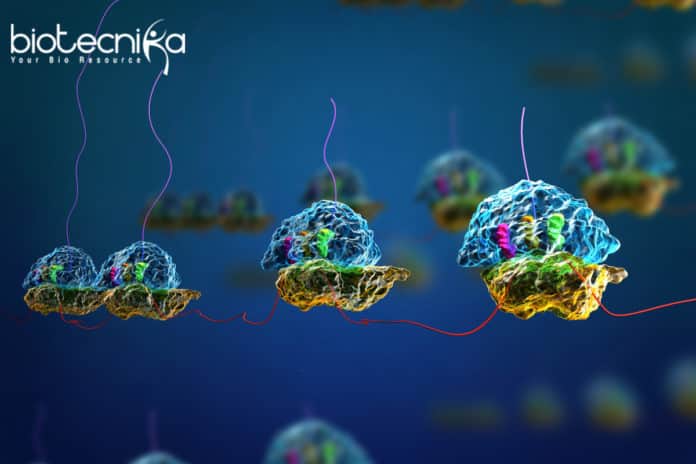A study conducted by researchers from the University of Colorado School of Medicine provides us with an observation of the core mechanisms of pre-mRNA splicing.
The study targets the process of translation where the spliceosome removes the introns (Non-coding regions) on the precursor-messenger RNA(p-mRNA), and the exons (coding regions) are stuck back together. Pre-mRNA splicing is one of several vital steps that are involved in converting pre-mRNAs into mature mRNA (messenger RNA), ultimately resulting in the production of protein.
Understanding the highly complicated process of RNA splicing is necessary to interpret the potential causes of diseases.
As stated by Rui Zhao, Ph.D., the lead author of the study-Aberrant splicing, contributes to 30% of human genetic disorders and might be the cause for diseases like cancer.
In the study published initially in Advanced Online Publication of Nature, the team has reported that cryoEM structures provide the first view of the earliest event in splicing commit pre-mRNAs to splicing.
Cryo-EM ( cryogenic electron microscopy) technique allows studying of biomolecular structures at near-atomic resolution. For their observation, Zhao and her colleagues studied the cryo-EM structures of the yeast spliceosomal E complex assembled on introns.
The process of pre-mRNA splicing is still under intensive
investigation by the scientific community, especially the mechanisms on how the introns and exons are determined among the sea of pre-mRNAs and the generation of circular RNAs by back splicing process remain unexplained.In their experiments, Zhao and her colleagues have proposed a unified model explaining the phenomena of intron definition, exon definition, and back-splicing without the need of a different spliceosome for each process, Their extensive biochemical experiments support these statements.
Zhao also adds that pre-mRNA splicing is an essential process for gene expression in all Eukaryotes. In higher mammals, an average of 95 percent of the nucleotides in the are introns. These introns need to be accurately removed by splicing before the mRNA can be translated. A single error in nucleotide can lead to disastrous consequences. Alternative splicing has become a fundamental approach for eukaryotic gene expression regulation.
The work was focused on yeast E complex, but it is also applicable in all Eukaryotes. It can also lead to experiments in many other systems to understand the mechanism and regulation of the splicing process.
Author: Swetha Kulkarni






























